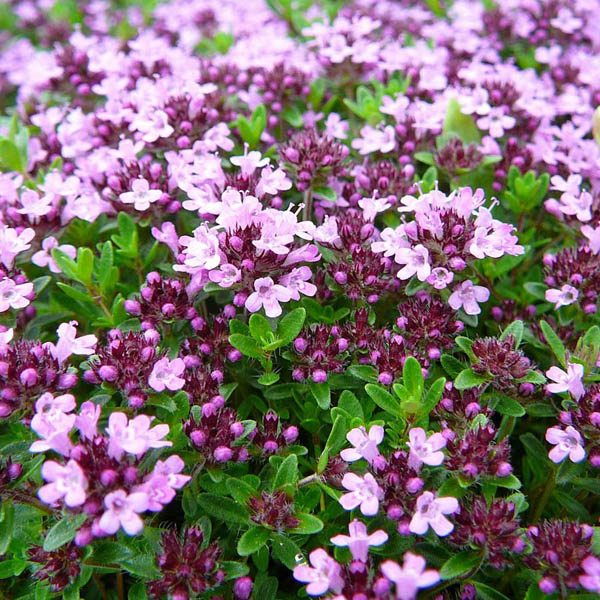

Thyme species used as ground cover are also non-toxic − they are simply not used as a spice because they do not have the typical thyme flavour. In some cases, small amounts can even have beneficial effects such as stimulating digestion and increasing the well-being of your pets. Thyme is safe for pets such as dogs and cats. During pregnancy, however, you should avoid thyme tea and thyme products, as the essential oils have a relaxing effect on the uterine muscles and can trigger premature contractions. If it is used simply as a culinary or medicinal herb, it is completely harmless. The active ingredient thymol contained in thyme is slightly toxic but for the toxin to make any impact, a very large amount of thyme must be ingested. Breckland thyme also grows wild and looks very similar to common thyme Is thyme poisonous? Breckland thyme, which has a milder aroma, is often confused with common thyme. On the other hand, distinguishing between plants within the genus can be difficult. The main characteristics of thyme herbs are an intense aroma from their essential oil thymol, small leaves, semi-upright creeping growth, and the pale pink or purple two-lipped flowers. Plants that are easily confused with thyme: Plants that belong to the thyme genus ( Thymus) are usually easy to recognise and are rarely confused with other plants. You can find out all about overwintering thyme here. Lavender thyme ( Thymus thracicus), caraway thyme ( Thymus herba-barona) and lemon thyme ( Thymus citriodorus), on the other hand, are not as hardy.

Compared to other thyme species, common thyme is quite frost-hardy and can withstand temperatures as low as -23 ☌. After taking a break over winter, thyme herbs sprout again as the temperatures rise in spring. Thyme bushes are great bee pastures Is thyme perennial? Butterflies also take advantage of the high nectar value of thyme flowers. It is an important food source for wild bees in particular. With its pink two-lipped flowers, it attracts not only bees but also a whole host of other insects. Is thyme bee-friendly? Yes, thyme is bee friendly. The typical labiate flowers bloom pink or purple After flowering, dark brown ovoid nutlets develop, each containing several seeds. Thyme flowers are typically labiate, consisting of five petals and four stamens. During this time, the herb produces inflorescences with small pale pink to light purple flowers. Thyme shrubs flower from June to October. The leaves are not hairy, but they do have oil glands that contain the essential oils that give thyme its distinctive aroma. Thyme leaves are typically silver-green, but this depends on the variety. The twigs bear small, short, elliptical leaves that are somewhat curled at the edges. Its four-edged twigs are strongly branching and become increasingly woody with age. Thyme plants have extensive root systems, and quickly form runners. Depending on the species, the growth is either upright or creeping. Thyme originated in the Mediterranean Flowers and leavesĪt 10 to 40 centimetres tall, thyme grows as a small, bushy, evergreen shrub. Thyme is also a popular herb for cooking its essential oils unfurl a Mediterranean flavour that pairs nicely with meat and fish dishes. The benefits of thyme as a medicinal herb have been known for a long time, and it is still used to treat colds and stomach complaints. Find out more about the different thyme sp ecies and varieties in our dedicated article. Today, several thyme varieties still grow wild in parts of Europe, including large thyme ( Thymus pulegioides), mother of thyme ( Thymus praecox), rock thyme ( Thymus alpinus) and Breckland thyme ( Thymus serpyllum). As early as the Middle Ages, Benedictine monks brought thyme over the Alps into their monastery gardens, from where it spread to other parts of the world. Thyme originally comes from the Mediterranean region. It is also known as garden thyme and common thyme. Botanically, thyme belongs to the Lamiaceae family along with other popular herbs such as sage ( Salvia) and lavender ( Lavandula angustifolia). The name “thyme” is derived from the Greek word Thymos, which means to smoke or to offer incense, and it is a symbol of courage, strength and sacrifice.


 0 kommentar(er)
0 kommentar(er)
